In the realm of digital marketing, email remains an undisputed champion. Its ability to connect with audiences directly, at their convenience, makes it a valuable asset for businesses.
However, not all emails are created equal. In today's competitive landscape, where consumers are inundated with a constant stream of messages, the key to success lies in relevance.
Here's a staggering statistic to kick things off: relevant emails drive a whopping 18x more revenue than broadcast emails. Yes, you read that right. The era of generic, one-size-fits-all email marketing is fading into obscurity, replaced by a more targeted and personalized approach.
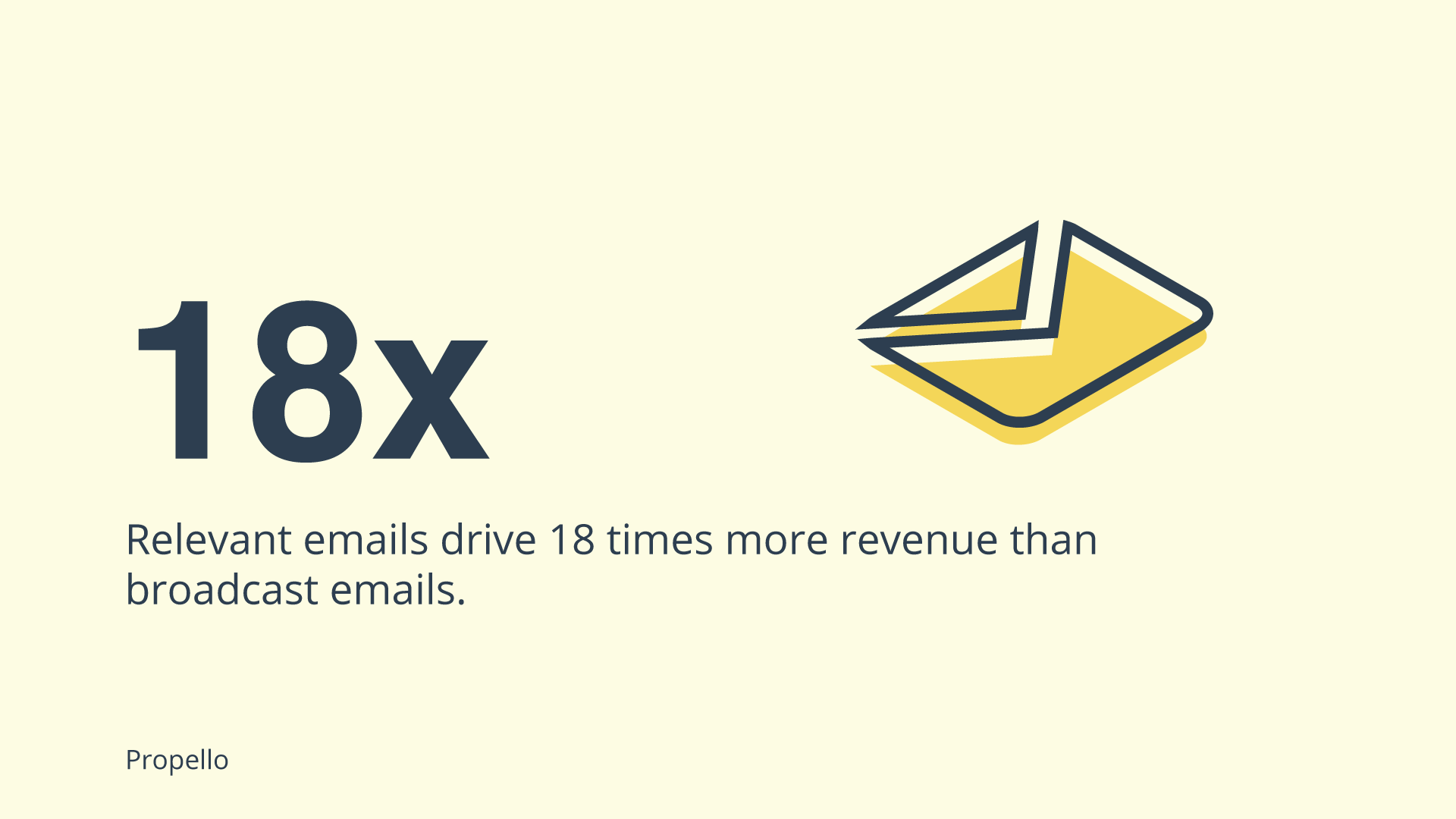
In this article, we'll delve into the art and science of crafting emails that resonate with your audience and drive substantial revenue gains.
|
Email Marketing Email marketing is the process of targeting your audience and customers through email. |
The Power of Personalization
In the age of hyper-personalization, addressing your recipients by their first name is just the tip of the iceberg. Personalization extends beyond the salutation; it's about tailoring the entire email experience to your individual subscribers.
Did you know that personalized emails have an open rate of about 18.8%, compared to 13.1% for emails without any personalization? That's a significant difference in engagement.
Moreover, personalized emails deliver 6x higher transaction rates. This means that not only are subscribers more likely to open and read your emails when they feel a personal connection, but they're also more inclined to take action, whether it's making a purchase, signing up for a webinar, or downloading an e-book.
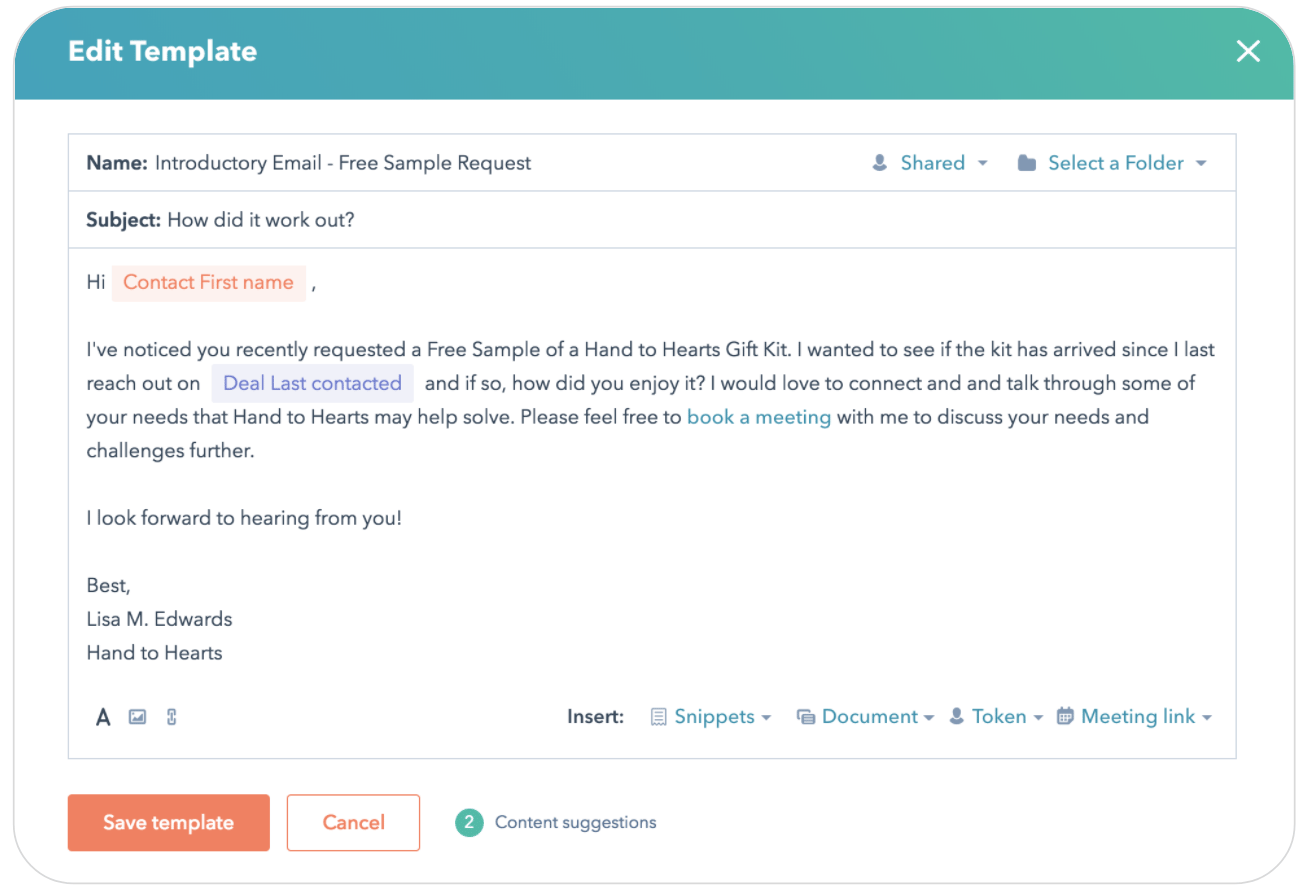
Understanding Broadcast Emails
Before we delve further into the relevance revolution, let's clarify what broadcast emails are. These are the generic, one-size-fits-all emails that are sent to your entire subscriber list.
While they may serve their purpose in certain situations, they often fall short in terms of engagement and conversion rates.
Broadcast emails typically lack personalization and fail to address the diverse needs and interests of your subscribers. Consequently, they tend to end up in the dreaded "spam" or "promotions" folder, never to see the light of day.
In contrast, relevant emails have a much better chance of landing in the recipient's primary inbox, where they're more likely to be noticed and acted upon.
The Relevance Revolution
The relevance revolution in email marketing is all about sending messages that matter to your audience. It's about understanding your subscribers' preferences, behaviors, and needs and using that information to craft emails that cater to them individually.
This approach directly addresses the challenges posed by broadcast emails and can lead to a significant increase in revenue.
One of the key drivers of relevance is data-driven segmentation. Instead of sending the same email to your entire list, you divide your subscribers into segments based on criteria like demographics, behavior, purchase history, or location.
For instance, if you're an e-commerce business, you might create segments for frequent shoppers, occasional buyers, and cart abandoners.
According to a report by Campaign Monitor, marketers have noted a 760% increase in revenue from segmented campaigns. This is a testament to the power of sending the right message to the right people at the right time.
Data-Driven Segmentation
Data-driven segmentation is the heart of relevant email marketing. By collecting and analyzing data on your subscribers, you gain insights that allow you to send highly targeted emails.
For example, an online clothing retailer can use purchase history to recommend complementary products, increasing the chances of upsells or cross-sells.
Data also helps you create highly relevant content. If you know a segment of your audience is interested in hiking gear, you can send them content related to hiking tips, gear reviews, and upcoming hiking events.
This not only keeps your subscribers engaged but also positions your brand as an authority in your niche.
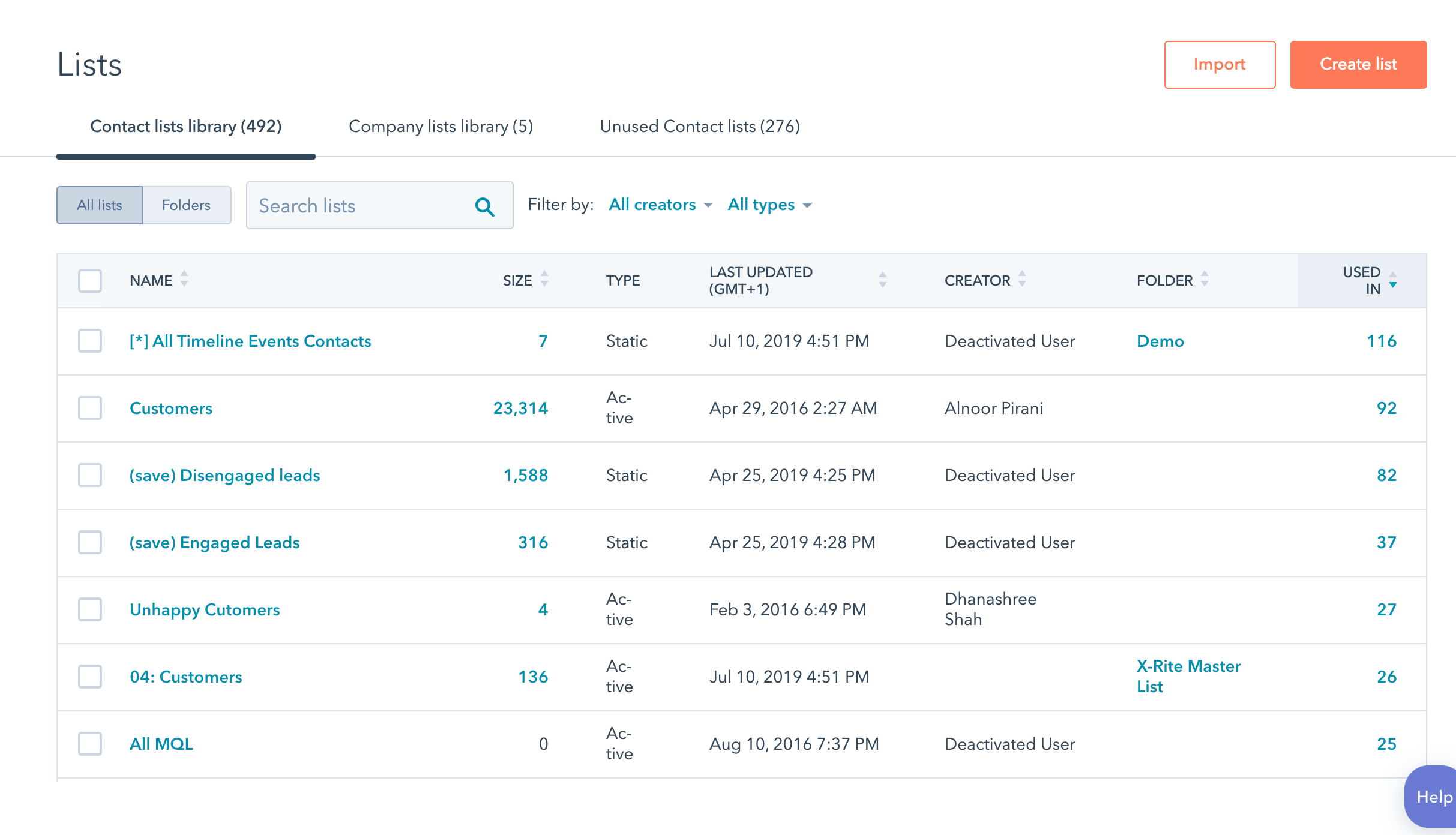
Tailored Content Creation
Once you've segmented your audience, the next step is to create tailored content that resonates with each group. This involves more than just tweaking the subject line; it's about delivering content that speaks directly to their needs and interests.
Segmented email campaigns get 14.31% more opens than non-segmented campaigns. Additionally, they achieve a 100.95% higher click-through rate.
These statistics underscore the importance of delivering the right content to the right audience. It's about providing value and relevance, not bombarding your subscribers with generic messages.
Dynamic Personalization
Dynamic personalization takes email relevance to the next level. Instead of sending static emails, dynamic content adapts in real-time based on the recipient's behavior or preferences. This could include product recommendations, weather updates, or personalized offers.
For example, if you run an online bookstore, a dynamically personalized email could showcase books similar to those the recipient has recently purchased or viewed on your website. Dynamic personalization increases engagement by making the email feel like a one-on-one conversation rather than a mass communication.
Case Studies
Let's put theory into practice with some real-world examples. Several businesses have transitioned from broadcast to relevant emails and reaped significant rewards.
Amazon: The Retail Revolution
Amazon, one of the world's largest online retailers, is known for its highly personalized email campaigns. They use sophisticated algorithms to analyze customer behavior and preferences.
Amazon sends personalized product recommendations based on a user's browsing and purchase history. This approach has significantly contributed to their revenue growth. According to VWO, Amazon's personalized product recommendations account for up to 35% of its total sales.
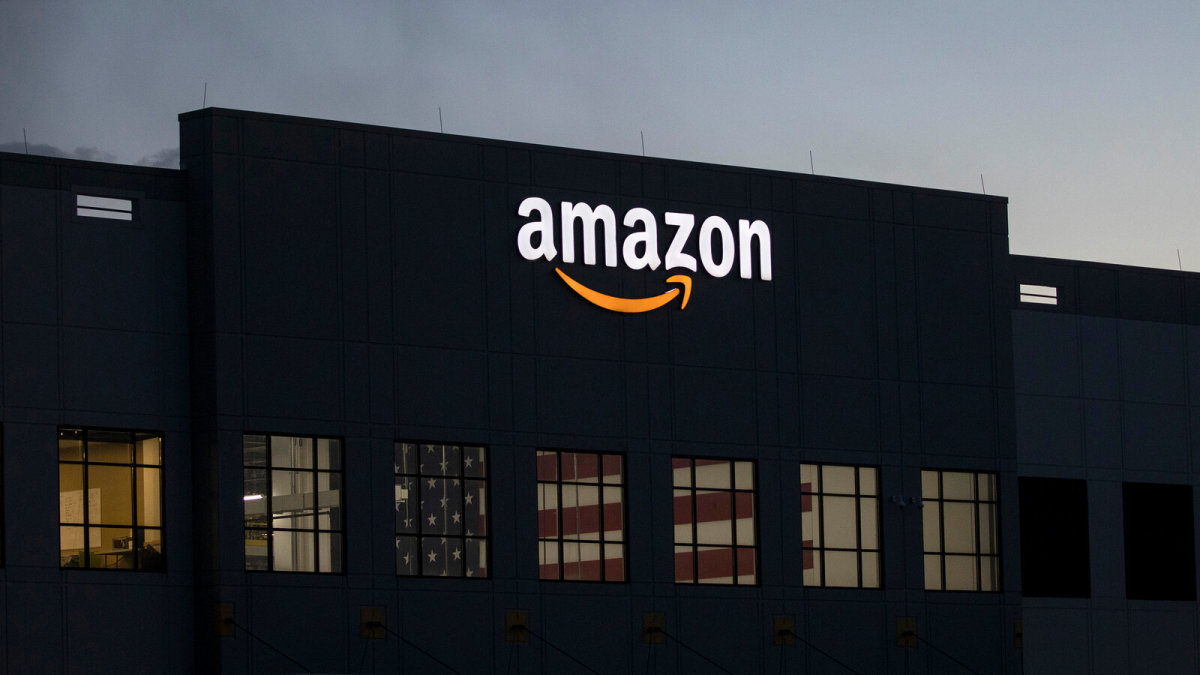
Spotify: The Software Success
Spotify, the music streaming giant, employs email personalization to enhance user engagement. They send personalized playlists and music recommendations based on a user's listening history.
This approach not only keeps users engaged but also encourages them to upgrade to premium subscriptions.
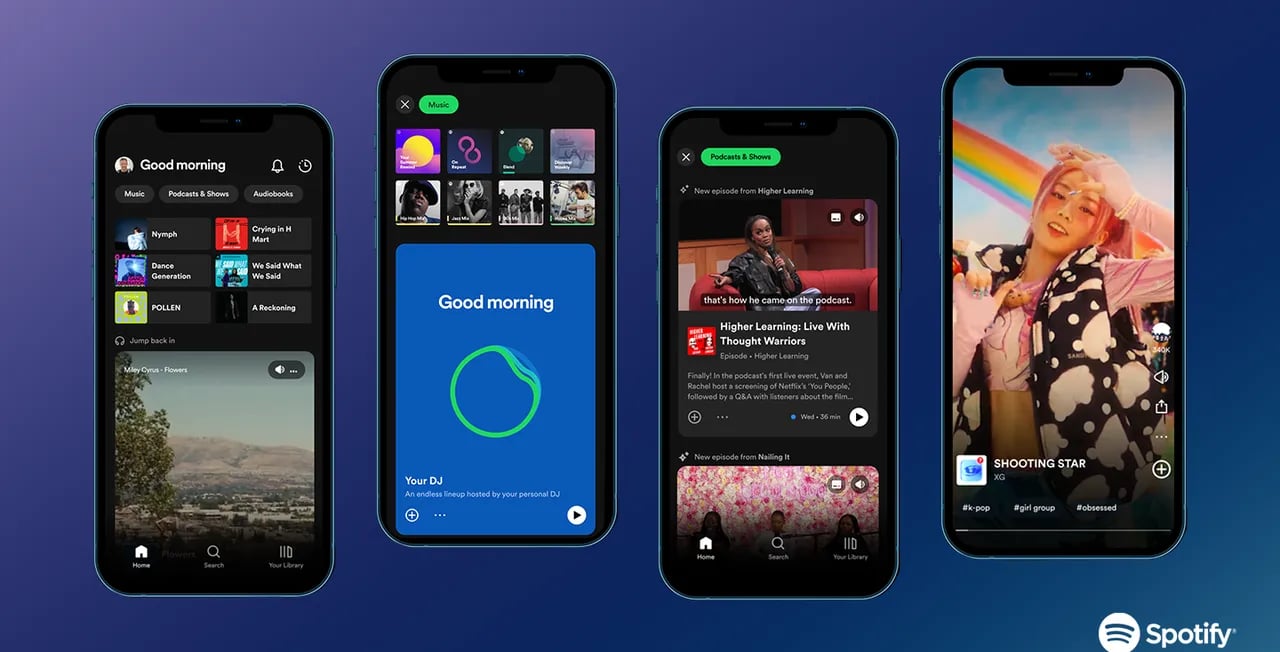
Airbnb: The Travel Triumph
Airbnb, a global hospitality marketplace, uses email personalization to provide tailored travel recommendations. They send emails suggesting accommodations and experiences in locations where users have previously shown interest.
Airbnb's personalized emails have resulted in a significant increase in bookings.

These case studies illustrate how businesses across different industries have harnessed the power of relevant emails to drive revenue, increase user engagement, and provide personalized experiences to their customers.
The common thread among these success stories is a commitment to understanding customer preferences and leveraging data to deliver targeted and meaningful content.
Measuring Success
To gauge the success of your relevant email campaigns, you need to track key metrics. These metrics provide valuable insights into your campaign's performance and ROI.
Some crucial email marketing metrics include:
- Open Rate: The percentage of recipients who opened your email.
- Click-Through Rate (CTR): The percentage of recipients who clicked on one or more links contained in your email.
- Conversion Rate: The percentage of recipients who completed the desired action, such as making a purchase or signing up for a webinar.
- Revenue Generated: The total revenue attributed to your email marketing campaigns.
- ROI: The return on investment, which measures the profitability of your email marketing efforts.
Analyzing these metrics allows you to fine-tune your campaigns for better results. For instance, if you notice a low CTR, you can experiment with different subject lines, content, or calls to action to improve engagement.
Practical Tips for Implementing Relevance
Ready to start sending more relevant emails? Here are some practical tips to get you started:
- Collect Data: Gather data on your subscribers, such as their purchase history, browsing behavior, and preferences.
- Segment Your List: Divide your email list into meaningful segments based on shared characteristics.
- Personalize Subject Lines: Use dynamic tags to personalize subject lines and header text.
- Create Targeted Content: Craft content that speaks directly to each segment's needs and interests.
- Leverage Automation: Implement marketing automation to send emails triggered by specific actions or events.
- Test and Iterate: A/B tests different elements of your emails to discover what resonates best with your audience.
Staying Competitive in Email Marketing
The competition in the email marketing landscape is fierce, and relevance is your secret weapon. By sending emails that truly matter to your subscribers, you not only increase revenue but also build stronger, more lasting relationships with your audience.
Remember, relevance in email marketing is an ongoing journey. Continuously collect data, refine your segmentation, and adapt your content to ensure that your emails remain meaningful to your subscribers.
Challenges and Solutions
Implementing relevance in email marketing isn't without its challenges. Here are some common roadblocks and how to overcome them:
Challenge 1: Limited Data
Solution: Invest in data collection tools and customer relationship management (CRM) systems to gather more information about your subscribers.
Challenge 2: Resource Constraints
Solution: Start small and prioritize segments with the highest potential for revenue growth. As your campaigns succeed, allocate more resources to expanding your relevance efforts.
Challenge 3: Personalization at Scale
Solution: Implement marketing automation platforms that can handle dynamic content and personalization for large subscriber lists.
Challenge 4: Content Creation
Solution: Develop a content strategy that aligns with your segmentation. Reuse and repurpose content to address different segments' needs.
Challenge 5: Resistance to Change
Solution: Educate your team on the benefits of relevance and the impact it can have on revenue. Showcase success stories to garner support.
Future Trends
The future of email marketing is bright, driven by advancements in technology and changing consumer preferences. Here are a few trends to watch out for:
- AI and Machine Learning: These technologies will enable even more sophisticated personalization and predictive content recommendations.
- Interactive Emails: Expect to see more interactive elements like quizzes, polls, and shoppable content within emails.
- Accessibility: Email marketers will prioritize making emails accessible to all, including those with disabilities.
- Video Integration: Videos within emails will become more prevalent, providing engaging content.
- Mobile Optimization: As mobile device usage continues to rise, optimizing emails for mobile will be a top priority.
Conclusion
In a digital landscape saturated with messages, relevance is your ticket to standing out and driving substantial revenue. The statistics don't lie: relevant emails drive 18x more revenue than broadcast emails.
By harnessing the power of personalization, data-driven segmentation, and dynamic content, you can create email campaigns that resonate with your audience and deliver exceptional results.
It's time to transition from generic broadcasts to targeted, meaningful messages. The future of email marketing is all about relevance, and the rewards are substantial.
Ready to harness the power of personalized email marketing for your business? Contact Fine Media today to explore how our expertise can help you drive revenue and engage your audience through tailored email campaigns.



